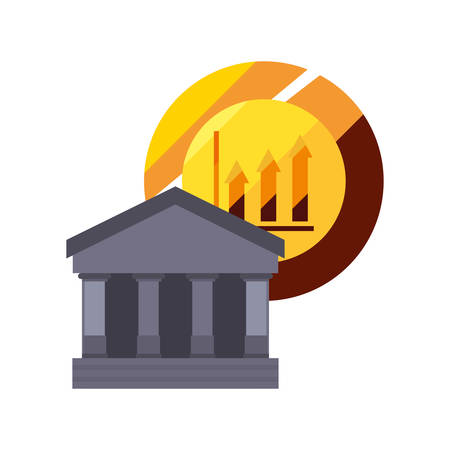1. Introduction: The Evolution of Cryptocurrency
Cryptocurrency has come a long way since the inception of Bitcoin in 2009. Initially, Bitcoin was seen as an experimental digital currency, but over time, it gained widespread adoption and became a store of value often referred to as “digital gold.” However, as the crypto space evolved, new digital assets known as altcoins emerged, offering unique features and improvements over Bitcoin.
What Led to the Rise of Altcoins?
Bitcoins success paved the way for other cryptocurrencies to enter the market. Developers and innovators saw opportunities to improve on Bitcoin’s limitations, such as scalability, transaction speed, and programmability. This led to the creation of altcoins like Ethereum and Litecoin, each designed with specific use cases in mind.
(1) Bitcoin’s Limitations
- Slow transaction speeds
- High energy consumption due to mining
- Lack of smart contract functionality
(2) The Need for Innovation
- Developers sought faster transactions
- The rise of decentralized applications (dApps)
- Demand for more efficient consensus mechanisms
The Role of Ethereum, Litecoin, and Other Altcoins
The introduction of Ethereum in 2015 brought a game-changing feature: smart contracts. Unlike Bitcoin, which primarily serves as a decentralized currency, Ethereum allows developers to create decentralized applications (dApps) and execute automated contracts without intermediaries. Similarly, Litecoin aimed to improve upon Bitcoin by offering faster transaction times and lower fees.
| Altcoin | Main Features | Use Cases |
|---|---|---|
| Ethereum (ETH) | Smart contracts, dApps, DeFi | NFTs, decentralized finance |
| Litecoin (LTC) | Faster transactions, lower fees | P2P payments, microtransactions |
| Other Altcoins | Diverse utilities and innovations | Privacy coins, stablecoins, governance tokens |
The Growing Impact on the Crypto Landscape
The emergence of altcoins has significantly impacted the cryptocurrency ecosystem. With blockchain technology advancing rapidly, more projects are entering the space with innovative solutions that go beyond simple transactions. As more industries explore blockchain integration, altcoins will continue shaping the future of digital finance.
2. Ethereum: The Smart Contract Revolution
Understanding Ethereum’s Role in Decentralized Applications (DApps)
Unlike Bitcoin, which primarily functions as a digital currency, Ethereum is designed as a programmable blockchain that enables developers to build decentralized applications (DApps). These applications run on the Ethereum blockchain without the need for intermediaries, making them secure, transparent, and resistant to censorship.
Smart Contracts: The Backbone of Ethereum
One of Ethereum’s most groundbreaking innovations is smart contracts. These are self-executing contracts with predefined rules written in code. When certain conditions are met, the contract executes automatically, eliminating the need for third-party enforcement.
Key Features of Smart Contracts
- Automation: Executes transactions without human intervention.
- Security: Tamper-proof and stored on a decentralized network.
- Transparency: Visible and verifiable by anyone on the blockchain.
- Cost Efficiency: Reduces costs by removing intermediaries.
How Ethereum Differs from Bitcoin
Ethereum and Bitcoin serve different purposes within the crypto space. While both operate on blockchain technology, their functionalities vary significantly.
| Feature | Ethereum | Bitcoin |
|---|---|---|
| Main Purpose | Smart contracts & DApps | Digital currency & store of value |
| Transaction Speed | Faster (around 15 seconds per block) | Slower (around 10 minutes per block) |
| Flexibility | Highly programmable | Limited scripting capability |
| Total Supply | No fixed supply limit | Capped at 21 million BTC |
| Consensus Mechanism | Transitioning to Proof of Stake (PoS) | Proof of Work (PoW) |
The Future of Ethereum and Its Impact on Crypto Innovation
Ethereum continues to evolve, especially with upgrades like Ethereum 2.0, which aims to improve scalability, security, and energy efficiency. As more developers build DApps and integrate smart contracts into various industries, Ethereum’s role in shaping the future of blockchain technology becomes even more significant.

3. Litecoin and the Need for Speed
When it comes to cryptocurrency transactions, speed and cost are two of the most important factors. Bitcoin, while revolutionary, has often faced issues with slower transaction times and higher fees, especially during peak usage periods. This is where Litecoin comes in as a strong alternative.
How Litecoin Speeds Things Up
Litecoin was created by Charlie Lee in 2011 as a “lighter” version of Bitcoin. It shares many similarities with Bitcoin but introduces key improvements that make it faster and more efficient for everyday transactions.
(1) Faster Block Generation
One of Litecoin’s biggest advantages is its block time. While Bitcoin has an average block time of 10 minutes, Litecoin processes blocks in just 2.5 minutes. This means transactions are confirmed much faster, making it a better choice for quick payments.
(2) Lower Transaction Fees
Another major benefit of Litecoin is its lower transaction fees compared to Bitcoin. Because it processes transactions more efficiently, users often pay significantly less per transaction. This makes Litecoin an attractive option for those who frequently send or receive crypto.
(3) Increased Scalability
Thanks to its faster block generation and lower fees, Litecoin can handle a higher volume of transactions compared to Bitcoin. This scalability makes it a practical choice for merchants and consumers looking for a reliable digital payment method.
Comparing Bitcoin and Litecoin
The table below highlights some key differences between Bitcoin and Litecoin:
| Feature | Bitcoin (BTC) | Litecoin (LTC) |
|---|---|---|
| Block Time | 10 minutes | 2.5 minutes |
| Transaction Fees | Higher | Lower |
| Total Supply | 21 million | 84 million |
| Algorithm | SHA-256 | Scrypt |
| Main Use Case | Store of value | Everyday transactions |
The Everyday Crypto Alternative
Because of its speed and affordability, Litecoin has positioned itself as one of the best options for day-to-day cryptocurrency transactions. Whether youre paying for goods or transferring funds quickly, Litecoin offers a seamless experience with fewer delays and lower costs.
Adoption and Future Growth
Litecoin continues to gain traction among businesses and payment processors worldwide. With ongoing development and enhancements such as the integration of the Lightning Network, Litecoin aims to become even more efficient in the future.
For those looking for a fast, low-cost alternative to Bitcoin, Litecoin remains one of the top choices in the crypto market.
4. Beyond Bitcoin and Ethereum: The Expanding Altcoin Ecosystem
As the cryptocurrency market evolves, numerous altcoins have emerged, each catering to different use cases and technological advancements. While Bitcoin and Ethereum dominate the space, other cryptocurrencies play a vital role in shaping the broader crypto economy. From stablecoins designed for price stability to decentralized finance (DeFi) projects and privacy-focused coins, the altcoin ecosystem is expanding rapidly.
Stablecoins: Bridging Traditional Finance and Crypto
Stablecoins are digital assets pegged to traditional currencies like the U.S. dollar, providing a reliable store of value in the volatile crypto market. These coins help facilitate seamless transactions between fiat and cryptocurrencies.
| Stablecoin | Pegged Asset | Use Case |
|---|---|---|
| USDT (Tether) | USD | Trading & Payments |
| USDC (USD Coin) | USD | Regulated Transactions |
| DAI | Crypto-backed | Decentralized Finance |
DeFi Projects: Revolutionizing Financial Services
The rise of DeFi has introduced financial services such as lending, borrowing, and yield farming without intermediaries. These platforms utilize smart contracts to enable decentralized financial transactions.
(1) Uniswap: A Decentralized Exchange (DEX)
Uniswap allows users to trade cryptocurrencies directly from their wallets without relying on a centralized exchange. It uses an automated market maker (AMM) model to provide liquidity.
(2) Aave: Decentralized Lending and Borrowing
Aave enables users to lend and borrow crypto assets while earning interest or paying competitive rates. Its decentralized nature removes the need for traditional banks.
(3) Compound: Algorithmic Interest Rates
The Compound protocol lets users supply crypto assets to liquidity pools and earn interest based on algorithmically determined rates.
Privacy Coins: Enhancing Transaction Anonymity
Privacy-focused cryptocurrencies prioritize security and anonymity by obscuring transaction details. These coins are particularly appealing for users who value financial privacy.
(1) Monero (XMR): Untraceable Transactions
Monero employs ring signatures and stealth addresses to make transactions untraceable, offering complete privacy for senders and receivers.
(2) Zcash (ZEC): Selective Privacy Features
Zcash provides both transparent and shielded transaction options, allowing users to choose their level of privacy when transacting.
(3) Dash: Fast and Private Payments
Dash offers an optional “PrivateSend” feature that mixes transactions, enhancing user anonymity while maintaining fast transaction speeds.
5. Challenges and Opportunities in the Altcoin Market
Volatility: A Double-Edged Sword
One of the most defining characteristics of altcoins is their volatility. Prices can skyrocket within hours, only to plummet just as quickly. While this creates opportunities for traders, it also poses risks for long-term investors. The unpredictable nature of altcoins makes them both exciting and risky.
Regulatory Concerns: Uncertainty Looms
The crypto market operates in a gray area when it comes to regulations. Governments worldwide are still figuring out how to handle cryptocurrencies, leading to uncertainty. Regulatory changes can impact prices and adoption rates, making it crucial for investors to stay informed.
(1) Legal Status Varies by Country
Different countries have different stances on altcoins. Some embrace them, while others impose strict regulations or outright bans.
(2) Potential for Future Regulations
As governments develop clearer policies, regulations could either help legitimize the market or create hurdles for widespread adoption.
Adoption Challenges: Gaining Mainstream Acceptance
Despite growing interest, mainstream adoption of altcoins remains a challenge. Businesses and consumers often hesitate due to price fluctuations, security concerns, and usability issues.
(1) Merchant Acceptance
Many businesses still prefer traditional payment methods over accepting altcoins.
(2) User-Friendly Solutions Needed
The complexity of crypto wallets and transactions can deter non-tech-savvy users.
The Potential for Growth and Integration
Despite these challenges, the future of altcoins looks promising. Innovations in blockchain technology and increasing institutional interest could drive mainstream adoption.
| Challenges | Opportunities |
|---|---|
| High volatility | Potential for high returns |
| Regulatory uncertainty | Clearer regulations could boost legitimacy |
| Lack of merchant adoption | More businesses are exploring crypto payments |
| User complexity | Simplified platforms make crypto more accessible |
The altcoin market presents both risks and rewards. While challenges like volatility and regulation persist, innovations and growing interest indicate a bright future ahead.
6. Conclusion: The Future of Altcoins in the Crypto Revolution
The cryptocurrency market has evolved significantly since Bitcoin’s inception, and altcoins like Ethereum, Litecoin, and many others have played a crucial role in shaping this transformation. These digital assets have expanded the possibilities of blockchain technology beyond simple transactions, enabling smart contracts, decentralized finance (DeFi), and innovative use cases that continue to push the industry forward.
The Impact of Leading Altcoins
| Altcoin | Key Contribution |
|---|---|
| Ethereum (ETH) | Pioneered smart contracts and DeFi applications |
| Litecoin (LTC) | Enhanced transaction speed and efficiency |
| Cardano (ADA) | Focused on security and scalability with a research-driven approach |
| Polkadot (DOT) | Facilitated blockchain interoperability |
| Solana (SOL) | Brought high-speed transactions with low fees |
The Next Phase of Cryptocurrency Development
(1) Increased Adoption of Smart Contracts
The rise of Ethereum and similar platforms has demonstrated the potential of smart contracts. In the coming years, we can expect even greater adoption across industries such as real estate, healthcare, and supply chain management.
(2) Expansion of Decentralized Finance (DeFi)
The DeFi ecosystem continues to grow, providing users with alternatives to traditional banking. As more altcoins introduce unique financial solutions, decentralized lending, staking, and yield farming will likely become mainstream.
(3) Enhanced Scalability Solutions
A key challenge for many blockchains is scalability. Layer 2 solutions like Ethereum’s rollups and other innovations will help improve transaction speeds while reducing costs, making cryptocurrencies more accessible to everyday users.
(4) Regulatory Developments and Institutional Interest
The increasing involvement of governments and financial institutions indicates that regulations will shape the future of altcoins. While some rules may create hurdles, they could also bring legitimacy and stability to the market.
(5) Evolution of Interoperability Between Blockchains
The ability for different blockchains to communicate seamlessly is becoming a priority. Projects like Polkadot and Cosmos are leading the way in creating interconnected networks that allow assets and data to move freely across multiple chains.
The crypto revolution is far from over, and altcoins will continue to play a major role in its progression. As technology advances and adoption increases, these digital assets are set to redefine how we interact with finance, technology, and decentralized applications.


